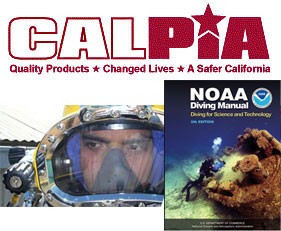Divers have used air as a breathing gas since the beginning of diving. Its principal advantages are that it is readily available and inexpensive to compress into cylinders or use directly from compressors with surface-supplied diving equipment. Air is not the “ideal” breathing mixture for diving because of the decompression liability it imposes. Since decompression obligation is dependent on exposure to inspired PN2 (nitrogen partial pressure), this obligation can be reduced by replacing a portion of the nitrogen content of the diver’s breathing gas with oxygen, which is metabolized by the body. This is the fundamental benefit of enriched air nitrox (Nx) diving (Wells 1989). Historically, the two most commonly used nitrox mixtures in NOAA have been 32% and 36% oxygen. Once called NOAA Nitrox 32 (NN32) and NOAA Nitrox 36 (NN36), such mixtures are now identified using a more general nomenclature as Nx32 and Nx36. The remaining gas in nitrox mixes is considered to be nitrogen, even though it may contain other inert gases like argon. “Nitrox” is a generic term that can be used for any gaseous mixture of nitrogen and oxygen, but in the context of this chapter, the implication is that nitrox is a mixture with a higher concentration of oxygen than that of air. Using such oxygen enhanced mixtures can significantly increase the amount of time a diver can spend at depth without incurring additional decompression when compared to air diving.







